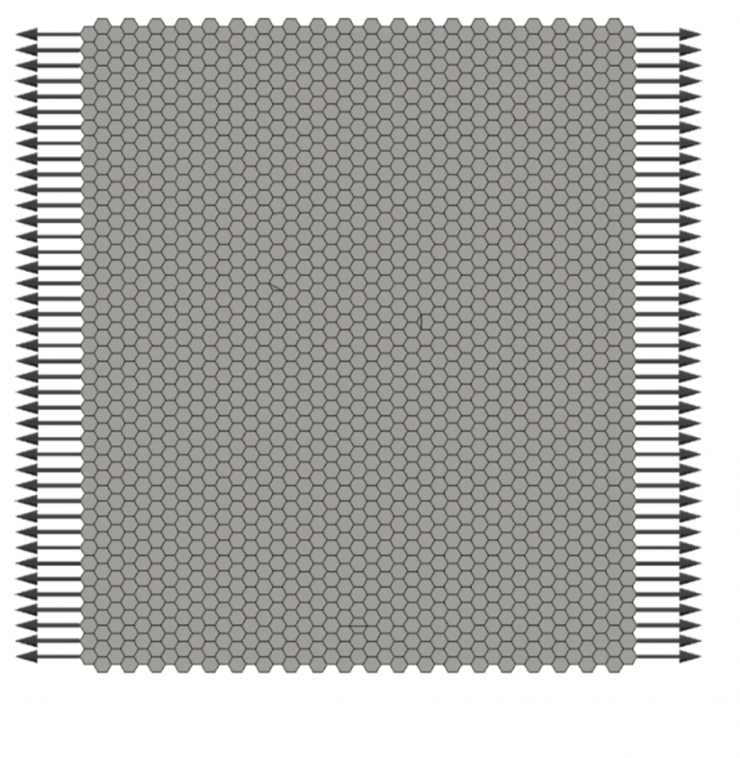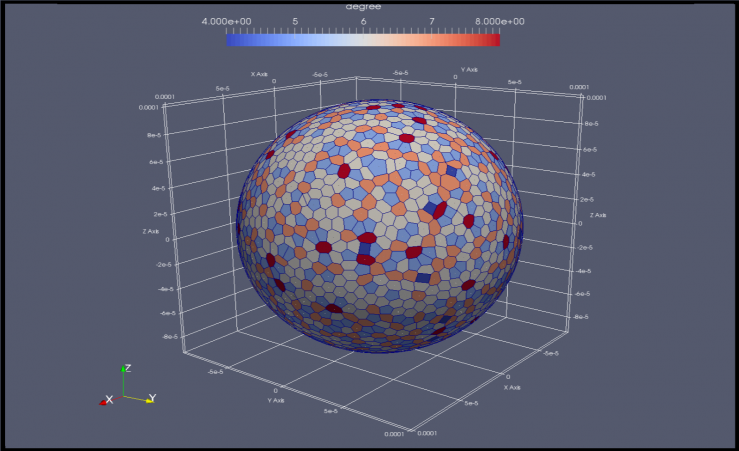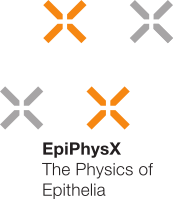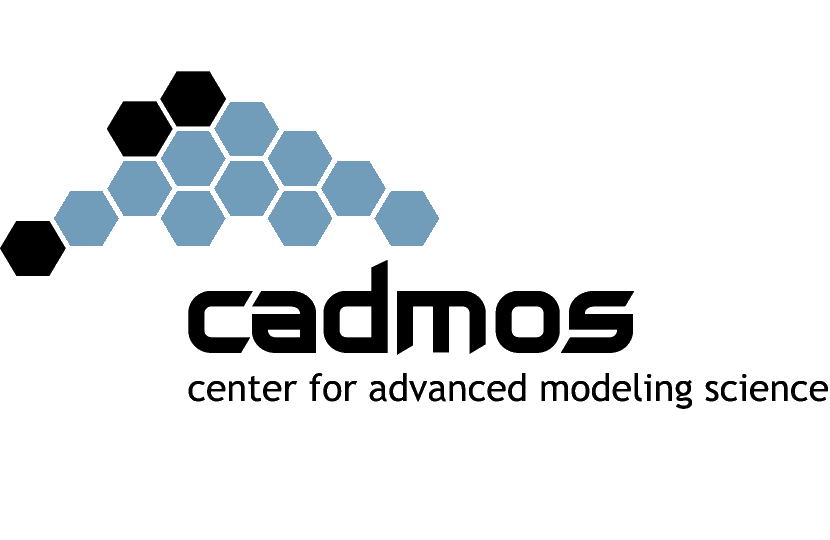EpiCells is an open-source package aiming at simulating epithelial tissues. It is based on a vertex model of confluent cell monolayers that we implement and develop. This cell-based model combines both epithelium physics and biology. It allows us to represent cell mechanical properties and external mechanical constraints, as well as cell proliferation and signalling. This model is at the center of our work to address global interrogations on the relation between cell biophysical properties on the one hand and tissue mechanics and morphology on the other hand.
We use EpiCells in different studies investigating
- the interplay between cells and cell monolayer mechanics,
- the roughness of cell fronts at different length scales,
- the morphogenesis of spiny hairs follicles covering the lower back of the Acomys Dimidiatus mouse, and
- the buckling of cell monolayers.
Our vertex model is inspired from the 2D models proposed by Farhadifar et al. 2007 and Tamulonis et al. 2011. Cells are represented by closed polygons defined by successive vertices interconnected by straight edges. A specificity of the vertex models of confluent cell monolayers is that neighbour cells share common edges. The dynamics of the model are driven by the motion of vertices, which are subjected to forces. The internal forces are derived from the cell monolayer energy function. The latter depends on the mechanical properties of single cells and their interaction with neighbouring cells.














